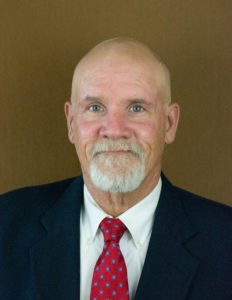The NTSB estimated a total of nearly 24 million flight hours in 2007, when 6.84 of every 100,000 flight hours yielded an airplane crash while 1.19 of every 100,000 yielded a fatal crash. This was down from an all-time high of 9.08 accidents per 100,000 hours in 1994. It is an old statistic that I’m quoting, but for argument’s sake, the ratios and numbers change only slightly each year. For private flights, the numbers are higher, but these flights are more difficult to document due to lax government regulation enforcement and non-reporting. (Sound familiar?) Statistics also show that up to 80 percent of all aviation accidents can be attributed to human error and inadequate training. The point of this introduction is that safety is safety, regardless of the endeavor or task.
Private plane crashes have declined. However, as stated in a recent article, “User error and insufficient training” still contributes to many more accidents than all the other causes.
Granted, but what does this have to do with Oilfield Safety? I am glad you asked. The Air Safety industry has some of the most rigid, thorough, and comprehensive safety rules, regulations, and training in any professional industry. Yet, we still have accidents and fatalities. We are still not talking about the near misses.
There is not much difference between the two industries in terms of safety. Would you want to work with people in the field, standing side by side with the individuals you have trained? Is that acceptable if you know they have met the minimum government standards that are applicable? I really don’t feel comfortable working side by side with an individual who has fulfilled only the minimum government standards! Standard equipment inspections reflect the same results. In all industries, inspections are only as good as the inspectors. The same principles apply.
The most dangerous aspect of our industry is still the activity on the highways. There is not much comfort there either. Most everyone in the workforce has a legitimate driver’s license and the majority of the drivers even have insurance. We do administer defensive driving. Is that a confidence builder? We even have regulations for the maximum-allowed driving hours that people with CDLs can drive before they must (temporarily) get off the road with their 18-wheeler. Sometimes the rigs are even legal, regarding weight and speed. I assume by now you are getting my point.
So regardless of whether you are 100 percent in compliance with the minimum standards (legitimately or not) that are required by law, we are not home free. If your training is in full compliance, 100 percent, that still offers no safety guarantees.
Each year it is incumbent on us, and paramount in our industry, to continually strive for zero incidents and accidents. If that requires going above and beyond the minimum requirements to ensure safety, I submit that it is worth every penny to do so. It pays dividends to have good safety results. It requires money, training, knowledge, time, and attention to trends, along with awareness and effectiveness of performance. After that requirement is fulfilled, I encourage re-training as often as it takes to drive the message home. Afterall, home is where we want to go each and every day
Those of you that read this publication are usually the decision makers in management.
New thinking is encouraged. Striving to exceed past performance is paramount for investors. We do that in operations. Why not in safety? Aim higher. Here are some examples:
Last year we produced X amount of oil. This year we can make a few adjustments, increase our production, and cut costs. Here is the cost, here is the current average, and here is the goal. The same standards and goals in safety should be the same aggressive equation. I don’t believe I’ve heard of anyone saying in the oilfield, “Let’s strive for mediocrity,” or the bare minimum. But I have heard executives say, “What can we get by with to achieve the minimum standard?”
We in the Permian Basin strive for yearly increased production, through technology, research, training, and ingenuity, plus decreased cost. I don’t think I have ever heard, “If we can at least make the same production numbers, with no controls of cost, then we should be golden.” Better planning prevents poor performance. Never be satisfied with the status quo.
In a nutshell, better safety can be achieved through innovative thinking. The same numbers in safety, year after year, is a status quo that reeks of complacency. Complacency produces the same results, just as in the aviation business. That is our enemy. We don’t have to reinvent the wheel. We just have to create a sense of urgency so that we don’t get anesthetized by redundancy, regardless of how many years we have flown a plane or had a safety policy.
Each month and each year, I strive to not come off as a “preachy safety person.” Safety professionals have seen, investigated, and testified about accidents that have occurred where the individuals have taken “individual exception” to a rule that they’ve been trained in. I’m not going out on a limb when I say that “we all have taken individual exceptions.” It is human nature. Training, monitoring, and enforcement are all that we are armed with.
As always, it’s not how many hits that we have in baseball that count. It is, however, how many times we reach HOME safely that counts.
Dusty
Dusty Roach is a safety professional based in Midland. He is also a public speaker on subjects of leadership and safety, and he maintains a personal website at dustyroach.com.











